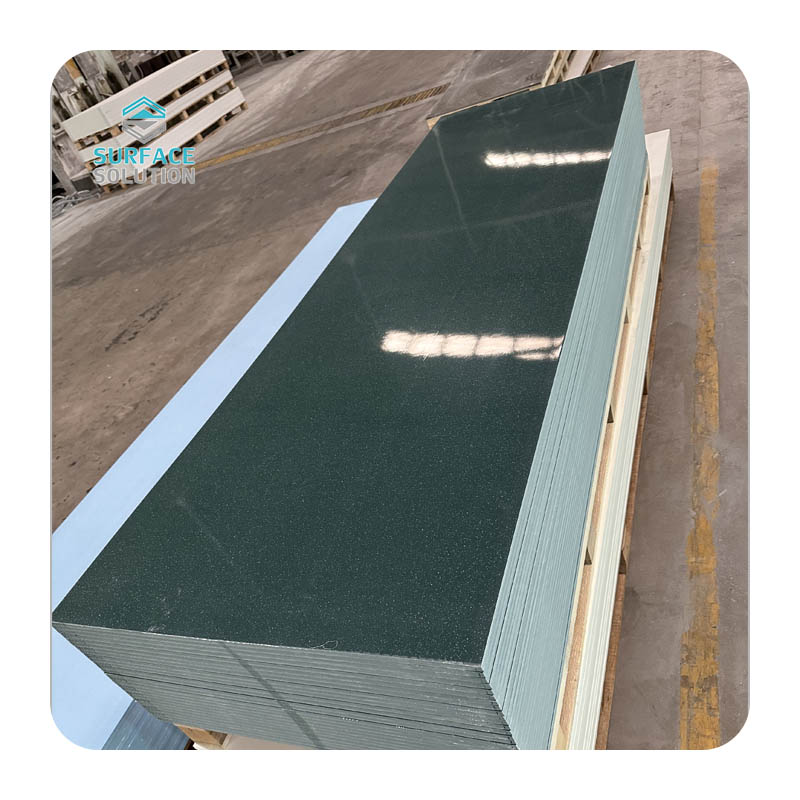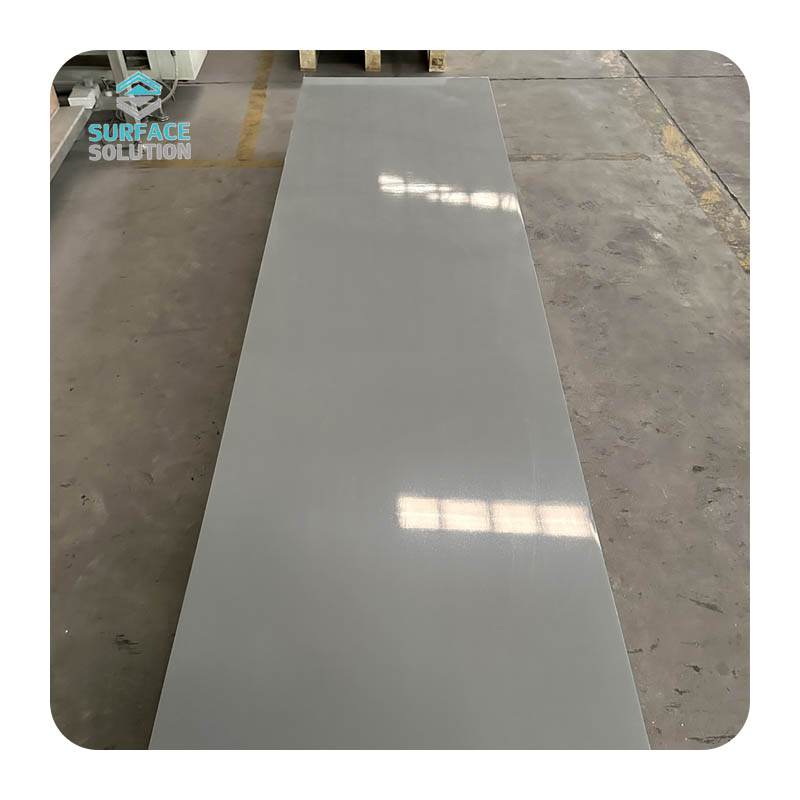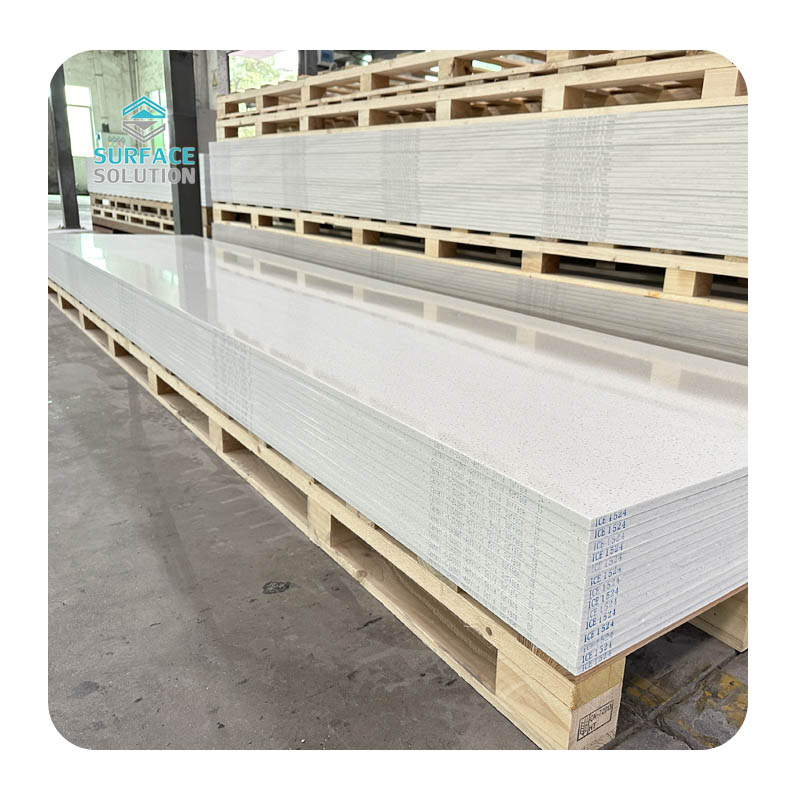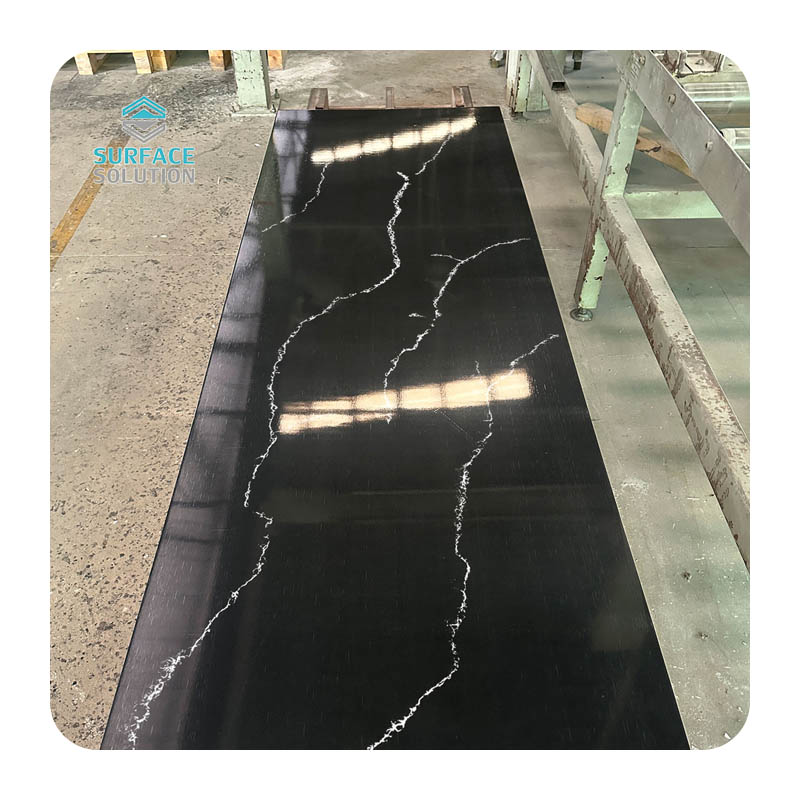What Is Solid Surface Material? A Complete Guide
In the world of interior design and home renovation, "solid surface material" is a term frequently heard—but what exactly is it? Unlike natural materials mined from the earth or rigid synthetic alternatives, solid surface is a engineered man-made material designed to balance functionality, aesthetics, and versatility. It has become a go-to choice for countertops, vanities, and other interior surfaces, thanks to its unique set of properties that bridge the gap between durability and design flexibility. Let’s break down its definition, key traits, uses, and how it stands out from other popular materials. Core Definition: What Makes It "Solid Surface"?
At its most basic, solid surface material is a homogeneous blend of resin binders (usually acrylic or polyester), mineral fillers (primarily alumina trihydrate, derived from bauxite), and small amounts of additives (pigments, UV stabilizers, catalysts). Unlike laminate (which has a thin decorative layer on top of a particleboard core) or natural stone (which has inherent veins and pores), solid surface is uniform throughout—meaning its color, pattern, and composition are consistent from the surface to the core. This "solid" structure is what gives the material its name, and it’s also the foundation for many of its unique benefits. Manufacturers create solid surface by mixing these ingredients into a paste, molding or extruding it into slabs or custom shapes, then curing and polishing it to a smooth finish. The result is a material that feels substantial yet adaptable, with no visible layers or weak points.

Key Characteristics of Solid Surface Material
Solid surface’s popularity stems from a set of standout traits that address common pain points with other materials:
1. Seamless Integration
One of the most distinctive features is its ability to be joined with resin-based adhesives that match the material’s color. When done correctly, these seams become nearly invisible—creating a continuous, smooth surface. This is a game-changer for large areas (like long kitchen countertops or oversized bathroom vanities) where seams in natural stone or laminate can break up the visual flow. It also eliminates gaps where dirt, moisture, or bacteria might collect.
2. Non-Porous and Hygienic
The resin binder in solid surface creates a tight, non-porous structure that doesn’t absorb liquids. Unlike granite (which requires regular sealing to prevent staining) or marble (which etches easily from acidic substances like lemon juice), solid surface resists spills from coffee, wine, oil, or cosmetics. This non-porosity also inhibits the growth of mold and bacteria—making it an ideal choice for kitchens, bathrooms, or healthcare settings (like hospital exam rooms) where hygiene is critical.
3. Repairability
Unlike natural stone (which can crack irreparably) or quartz (which chips easily and is hard to fix), solid surface is highly repairable. Minor scratches, small chips, or even light burns can be sanded and polished back to their original smooth finish—no need to replace the entire surface. This durability over time helps extend the material’s lifespan, making it a cost-effective choice in the long run.
4. Design Flexibility
Solid surface’s manufacturing process allows for endless customization. Pigments can be added to create any color—from bold hues to soft neutrals—and patterns (like marbled, speckled, or solid) that mimic natural materials without their limitations. It can also be molded into curved edges, integrated sinks, or custom shapes (such as built-in soap dishes or decorative trim) that are difficult or impossible to achieve with stone or tile. This flexibility makes it easy to match any interior style, from modern minimalism to traditional elegance.
5. Moderate Durability
While it’s not as hard as quartz or granite (it can scratch if exposed to sharp objects like unprotected knives), solid surface is more durable than laminate or wood. It resists impact better than many synthetic materials, and its core structure prevents warping or cracking under normal use (e.g., holding heavy appliances or daily wear from cleaning). It also has moderate heat resistance—thanks to its mineral filler—but it’s important to use trivets for hot pans, as extreme heat can discolor or melt the resin.
Common Applications of Solid Surface Material
Solid surface’s versatility makes it suitable for a wide range of interior uses:
Commercial Spaces: Restaurants, hotels, and offices use solid surface for reception desks, bar tops, or public bathroom vanities—thanks to its durability, easy maintenance, and ability to maintain a clean, professional look.
Specialty Uses: It’s even used for custom items like laboratory worktops (due to chemical resistance), children’s play tables (easy to clean and repair), or decorative wall panels (for a seamless, modern look).

How Solid Surface Compares to Other Materials
To understand its place in the market, let’s compare solid surface to three other popular options:
Solid surface strikes a middle ground: it’s more affordable than natural stone or quartz, more durable and repairable than laminate, and offers better design flexibility than all three.
Maintenance Tips for Solid Surface
Keeping solid surface in good condition is simple—no special products or intensive routines required:
Repairs: For small scratches, use fine-grit sandpaper (400-600 grit) to sand the area gently, then polish with a soft cloth. For deeper chips or burns, contact a professional installer—they can fill the damage with matching resin and refinish the surface.
Conclusion
Solid surface material is more than just a countertop option—it’s a versatile, practical solution for interior surfaces that prioritizes both form and function. Its seamless design, non-porous structure, repairability, and design flexibility make it a favorite for homeowners and designers alike. Whether you’re renovating a kitchen, upgrading a bathroom, or designing a commercial space, solid surface offers a balance of benefits that few other materials can match. Understanding its core traits helps you see why it’s remained a popular choice for decades—and why it’s likely to stay relevant for years to come.




 What Are Solid Surface Countertops? A Complete OverviewIn kitchen and bathroom design, solid surface countertops stand out as a versatile choice, balancing functionality, aesthetics, and durability. Unlike natural stone (granite, marble) or synthetic quartz, they offer unique benefits—but what exact
What Are Solid Surface Countertops? A Complete OverviewIn kitchen and bathroom design, solid surface countertops stand out as a versatile choice, balancing functionality, aesthetics, and durability. Unlike natural stone (granite, marble) or synthetic quartz, they offer unique benefits—but what exact A Comprehensive Guide to Cleaning Solid Surface CountertopsSolid surface countertops, such as surface solution, Staron, or Swanstone, have become a popular choice for modern kitchens and bathrooms due to their durability, seamless design, and resistance to stains. Unlike natural stone like granite or marble,
A Comprehensive Guide to Cleaning Solid Surface CountertopsSolid surface countertops, such as surface solution, Staron, or Swanstone, have become a popular choice for modern kitchens and bathrooms due to their durability, seamless design, and resistance to stains. Unlike natural stone like granite or marble, What Is Solid Surface Material? A Complete GuideIn the world of interior design and home renovation, "solid surface material" is a term frequently heard—but what exactly is it? Unlike natural materials mined from the earth or rigid synthetic alternatives, solid surface is a engineered man-made mater
What Is Solid Surface Material? A Complete GuideIn the world of interior design and home renovation, "solid surface material" is a term frequently heard—but what exactly is it? Unlike natural materials mined from the earth or rigid synthetic alternatives, solid surface is a engineered man-made mater What Are Solid Surface Countertops Made Of? A Comprehensive BreakdownSolid surface countertops have become a popular choice in modern kitchens and bathrooms, celebrated for their seamless appearance, durability, and versatility. Unlike natural stone (such as granite or marble) or ceramic tiles, soli
What Are Solid Surface Countertops Made Of? A Comprehensive BreakdownSolid surface countertops have become a popular choice in modern kitchens and bathrooms, celebrated for their seamless appearance, durability, and versatility. Unlike natural stone (such as granite or marble) or ceramic tiles, soli
















